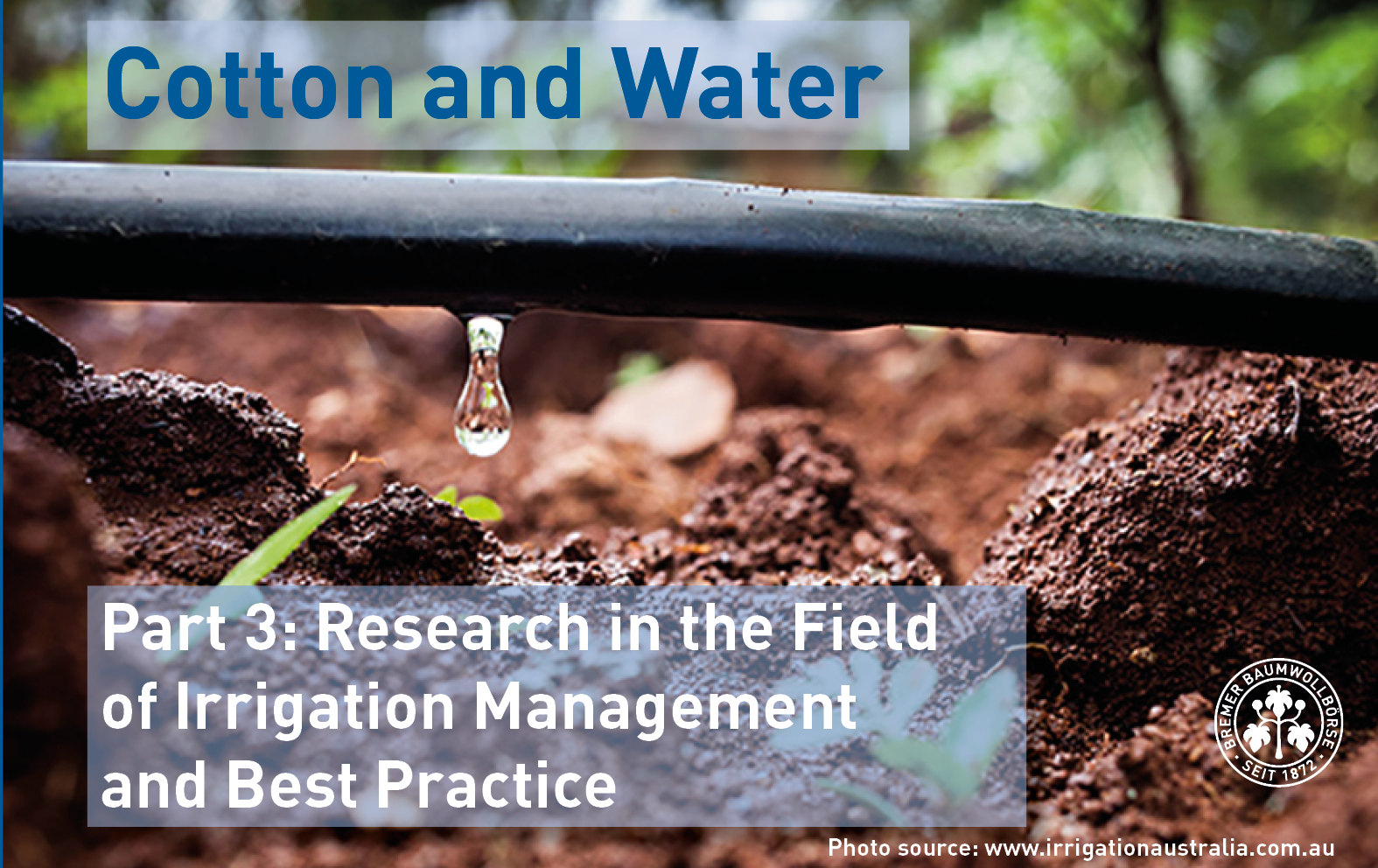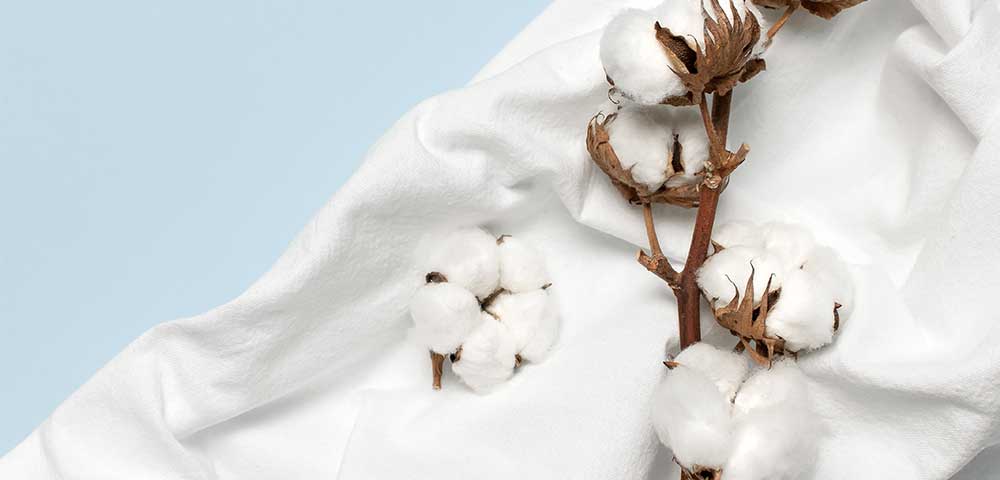Considerate Use of Resources due to Research and Technology
Today, we continue the article series ‘Cotton and Water’. The first two articles published at the end of last year highlighted the status quo and the used irrigation techniques. This part will focus on technologically enhanced methods that are the result of scientific research and development. The research’s aim is to optimize timing as well as the degree of irrigation in order to achieve the maximum yield against the background of a preferably considerate use of resources.

For the determination of the best point in time for additional irrigation, the farmers pursue various methods, including:
- Computer models that predict water use based on the growth stage of the plant and weather data
- Soil moisture probes that determine if there is sufficient water present to meet crop needs
- Infrared thermometers (IRTs) that measure the temperature of the cotton leaves. As the plant begins to run out of water, its leaf temperature will increase.
Improving Water Management for Cotton
Research continues to enhance water management. Next to future developments of sensors and measurement technologies, the potential of waste water for irrigation systems is investigated as well. Additionally, the influence of water and temperature on cotton yields or on cotton varieties with a higher tolerance for drought related stress can be determined by observing the plants’ physiognomy. Moreover, researchers deal with questions on administering nutrients to irrigated plants and the resulting soil health of irrigated areas.
Tangible success in water use: Best practices in the U.S., Australia and Israel
The efforts with respect to a sustainable use of water have led to substantial improvements in the meantime. The amount of water used for irrigation in the U.S. was considerably reduced. Over the past 35 years, U.S. cotton production has used 82 percent less water per bale as stated by the U.S. Cotton Trust Protocol. Long-term data from Australia also show that the cotton industry’s water efficiency has enhanced significantly. According to the Australian cotton growers’ association Cotton Australia water-use productivity by Australian cotton growers improved by 48 percent since 1992. There has been a 97 percent increase since 1992 in the number of 227kg bales of cotton lint produced per megalitre of water, meaning growers are using just about half the water they used to, to produce each bale.
Israel is regarded as cotton producer with progressive methods reducing water consumption during cotton production, too. Thanks to harnessing advanced technologies for efficient water use, over 60 percent of urban waste water is recycled for agricultural use at large and particularly for cotton. Israeli companies have also developed the drip irrigation system which saves more than 50 percent of water consumption in agriculture – Israeli cotton is irrigated using this technique. Further advanced and innovative technology utilization in Israel is precision irrigation. Plant water requirements are accurately determined by monitoring from the air, from the land and by using remote sensing and satellite imagery.
Sources: Cotton Inc (Cotton today), U.S. Cotton Trust Protocol, Cotton Australia, The Israel Cotton Board

